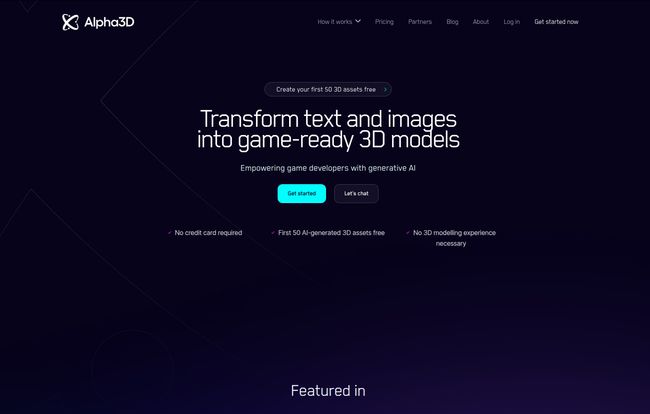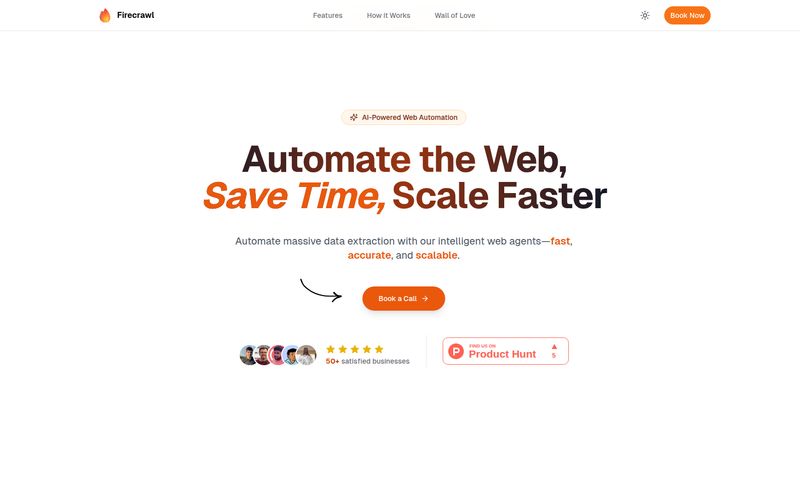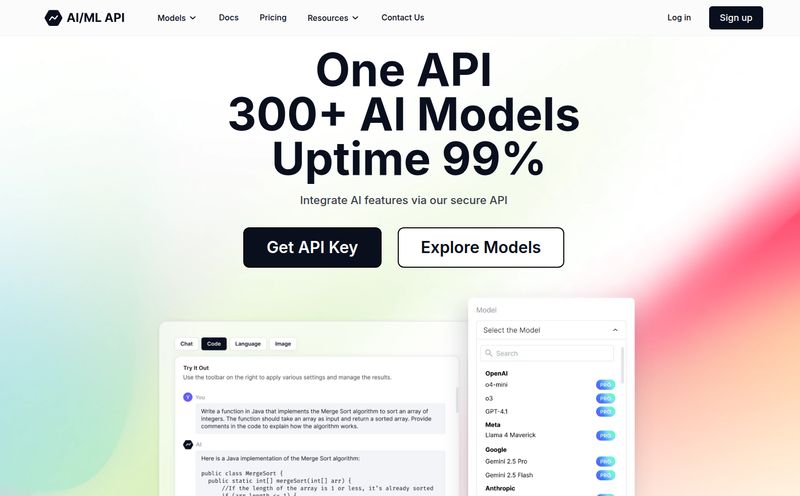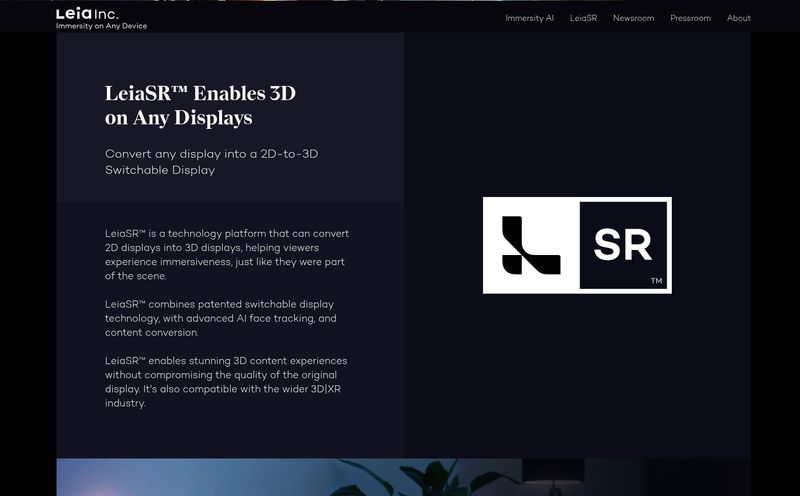For years, I’ve been neck-deep in the digital trenches of SEO and traffic generation, and I've seen countless tools that promise to be the 'next big thing.' Most fizzle out. But every now and then, something comes along that genuinely makes you stop and stare. Something that feels less like an iteration and more like a revolution. For me, in the world of 3D content, that something might just be Alpha3D.
If you've ever tried to commission or create a 3D model, you know the pain. It's a triangle of torment: you can have it fast, cheap, or good—but you can almost never have all three. It requires specialized skills, expensive software, and a whole lot of time. So when a platform waltzes in claiming to generate 3D assets from a simple text prompt or a 2D image, my inner skeptic raises a very prominent eyebrow. But my inner tech geek… well, he’s already clearing his schedule to play with the new toy.
What Exactly is Alpha3D? Breaking Down the Magic
So what’s the secret sauce? Alpha3D is a generative AI platform. You feed it a simple instruction, and it spits out a three-dimensional object. Think of it like a magical 3D vending machine. Instead of putting in a coin, you type in “a vintage suede armchair with wooden legs,” and poof, out comes a 3D model ready for your game, AR app, or metaverse project.
It’s built for the people who need 3D content but dont have a team of Pixar-level animators on standby. I’m talking about indie game developers, XR creators, marketing teams trying to build virtual showrooms, and anyone else who needs to populate a digital world without breaking the bank or their production timeline.
The entire premise is to take the bottleneck out of 3D asset creation. And from what I’ve seen, they’re onto something big.

Visit Alpha3D
The Core Features: How Does It Actually Work?
Okay, let's get into the nitty-gritty. Alpha3D isn't just a one-trick pony. It has a few different ways of bringing your ideas to life.
From a Simple Prompt to a 3D Model (Text-to-3D)
This is the feature that gets the most headlines, and for good reason. The text-to-3D generator is the heart of the platform. The workflow is stupidly simple. You describe what you want, and the AI interprets your words and constructs a model. This is an absolute game-changer for rapid prototyping. Imagine you're designing a level for a game. Instead of using placeholder gray boxes, you can generate dozens of variations of props in minutes. “A rusty barrel,” “a glowing sci-fi crate,” “a medieval wooden table.” You can fill your world and establish a visual style almost instantly.
Turning Your Photos into Assets (Image-to-3D)
This one really fascinates me. Got a photo of a cool-looking shoe or a unique piece of furniture? You can upload that 2D image, and Alpha3D’s AI will generate a 3D model based on it. It’s like a form of digital alchemy.
Now, here’s a dose of reality, and I appreciate Alpha3D for being upfront about it: this feature is currently trained on specific categories, namely shoes and furniture. So, don't expect it to turn a picture of your cat into a perfect 3D avatar just yet. But for e-commerce, architectural visualization, and product showcases in those niches? This is incredibly powerful. And it signals where the tech is heading.
Beyond Generation: The Moonlander SDK and Asset Management
Alpha3D isn't just about making individual objects; they’re thinking about the whole ecosystem. They have a tool called the Moonlander SDK, which is designed for Unity developers to create entire virtual worlds. Plus, the platform includes a 3D asset management system, which is a seriously practical feature. If you’re generating hundreds of assets, you need a way to organize, tag, and retrieve them. It's a small thing that shows they understand the real-world workflow of their users.
So, Is It Actually Any Good? My Honest Take
Look, the marketing claims are bold. “Up to 98% faster” and “100x cheaper.” Can that be real? In my experience, yeah, it pretty much can.
Think about it. A freelance 3D artist might charge anywhere from $50 to a few hundred dollars for a single, decent-quality prop, and it could take them a full day to make it. With a tool like Alpha3D, you can generate dozens of variations in an hour for the cost of a monthly subscription. The math speaks for itself.
Now, some purists might scoff. 'An AI can't replicate true artistry!' And you know what? They're partially right. For your hero assets—your main character, a key story item—you'll probably still want the bespoke touch of a human artist. But for the other 90% of your world? The background clutter, the environmental props, the endless variations of chairs and tables and rocks? This tool is an absolute beast. It democratizes creation, putting powerful tools in the hands of creators who were previously locked out by cost and complexity.
Let's Talk Money: Alpha3D's Pricing Plans
Alright, this is where things get interesting, and maybe a little confusing. When I first looked at the Alpha3D pricing page, I did a double-take. Here’s a quick breakdown of their main plans:
- Trial Plan (Free): This lets you generate up to 50 assets to see how the platform works. You get access to the tools, asset management, and all that. The catch? You can’t download the models. It’s a true try-before-you-buy, which I respect.
- Premium Plan ($0.99/month or $150/annual): This is the one that made me blink. The image on their site says $0.99 a month. Yes, less than a dollar. This plan unlocks the ability to actually download and use your creations. Now, I've seen some conflicting info mentioning a $150 annual price, which seems more realistic. My best guess is the $0.99/mo is either a wild introductory offer or a slight typo on the site. Either way, even at $150 a year, the value proposition is just insane. You'd be hard-pressed to find a better deal for unlimited creative potential. I'd recommend checking their official site for the most current pricing.
- Enterprise Plan (Custom): This is for the big leagues. Unlimited asset generation, dedicated support, API access—the works. If you're a large studio or corporation, this is the plan you'd be looking at.
Where It Shines and Where It Stumbles
No tool is perfect, right? It's about finding the right tool for the right job. Here's my honest breakdown.
What I love
The speed is the biggest win. It’s not just an improvement; it’s a fundamental change in how you can approach world-building and prototyping. The accessibility is a close second. Anyone with an idea can start creating in 3D, and thats a beautiful thing. And the cost? It’s a no-brainer for indie devs, startups, and solo creators.
What to be aware of
The main limitation, as mentioned, is the image-to-3D generator being focused on specific categories for now. Also, while the quality is surprisingly good for AI, it may not match the hyper-detailed, bespoke work of a senior 3D artist for a AAA game's main character. It's about managing expectations. This is a tool for scale and speed, not necessarily for creating the one hero asset that your entire project hinges on. It's a workhorse, not a unicorn.
Who Should Be Using Alpha3D Right Now?
I see a few groups getting massive value from this immediately:
- Indie Game Developers: Drowning in the need for environment art? This is your life raft.
- AR/VR Creators: Quickly build interactive experiences and virtual showrooms without a huge art budget.
- Architects and Designers: Need to quickly visualize a space with realistic furniture? Generate dozens of options in minutes.
- Marketing and Advertising Agencies: Create 3D assets for product showcases and interactive ads on the fly.
The Final Word on Alpha3D
After spending some time looking into Alpha3D, I'm genuinely excited. It's not just another tool; it’s a force multiplier. It's a platform that takes the historically walled-off garden of 3D creation and throws the gates wide open.
It won't put brilliant 3D artists out of a job. What it will do is handle the grunt work, the high-volume asset creation that bogs down projects and inflates budgets. It frees up human artists to focus on the truly creative, high-impact work. Is Alpha3D the future? In many ways, yes. It's a powerful, accessible, and ridiculously cost-effective peek at where the entire creative industry is heading. And I, for one, am here for the ride.
Frequently Asked Questions about Alpha3D
- Can I use models from Alpha3D in my commercial game?
- Yes, once you subscribe to the Premium plan (or higher), you can download the assets and use them in your commercial projects. The free trial is for evaluation purposes only.
- What file formats do the 3D models come in?
- The platform typically exports in standard formats like GLB, which is highly compatible with game engines like Unity and Unreal Engine, as well as various 3D software. It's always a good idea to check their documentation for the most up-to-date list of supported formats.
- How good is the quality of the AI-generated models?
- The quality is surprisingly impressive and constantly improving. It's perfect for background props, environmental assets, and rapid prototyping. For a hero asset, you might still want a human touch, but for populating a world, the quality is more than sufficient.
- Is the AI model static, or does it get better?
- Like all serious generative AI platforms, Alpha3D's models are constantly being trained and refined. The tool you use today will likely be even better in six months. That's the beauty of AI development.
- Is the $0.99/month price for real?
- It seems to be an official price listed on their site, but it could be a limited-time promotional offer. Other sources mention a $150 annual fee, which is also a great deal. Your best bet is to check the official Alpha3D pricing page for the latest information.
- How does Alpha3D compare to other AI 3D generators?
- Alpha3D is one of the more mature and commercially-focused platforms available. Its backing from companies like Nvidia and its features like the Unity SDK and asset management show that it's built for serious production workflows, not just as a tech demo.
Reference and Sources
- Alpha3D Official Website: https://www.alpha3d.io/
- Alpha3D Pricing Page: https://www.alpha3d.io/pricing/
- TechCrunch Article Mentioning Alpha3D: Generative AI in Game Development



